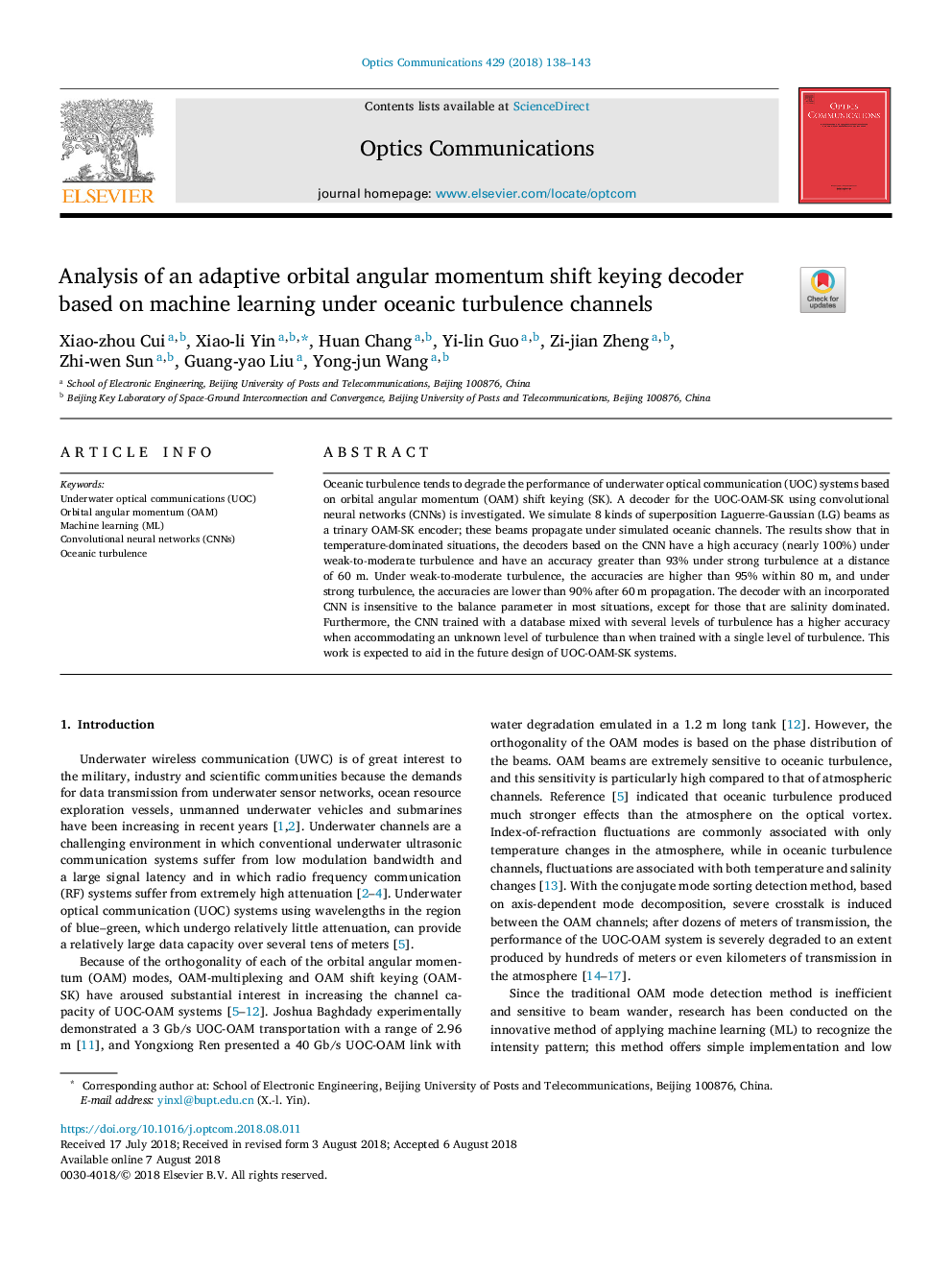| Article ID | Journal | Published Year | Pages | File Type |
|---|---|---|---|---|
| 7924477 | Optics Communications | 2018 | 6 Pages |
Abstract
Oceanic turbulence tends to degrade the performance of underwater optical communication (UOC) systems based on orbital angular momentum (OAM) shift keying (SK). A decoder for the UOC-OAM-SK using convolutional neural networks (CNNs) is investigated. We simulate 8 kinds of superposition Laguerre-Gaussian (LG) beams as a trinary OAM-SK encoder; these beams propagate under simulated oceanic channels. The results show that in temperature-dominated situations, the decoders based on the CNN have a high accuracy (nearly 100%) under weak-to-moderate turbulence and have an accuracy greater than 93% under strong turbulence at a distance of 60 m. Under weak-to-moderate turbulence, the accuracies are higher than 95% within 80 m, and under strong turbulence, the accuracies are lower than 90% after 60 m propagation. The decoder with an incorporated CNN is insensitive to the balance parameter in most situations, except for those that are salinity dominated. Furthermore, the CNN trained with a database mixed with several levels of turbulence has a higher accuracy when accommodating an unknown level of turbulence than when trained with a single level of turbulence. This work is expected to aid in the future design of UOC-OAM-SK systems.
Keywords
Related Topics
Physical Sciences and Engineering
Materials Science
Electronic, Optical and Magnetic Materials
Authors
Xiao-zhou Cui, Xiao-li Yin, Huan Chang, Yi-lin Guo, Zi-jian Zheng, Zhi-wen Sun, Guang-yao Liu, Yong-jun Wang,
